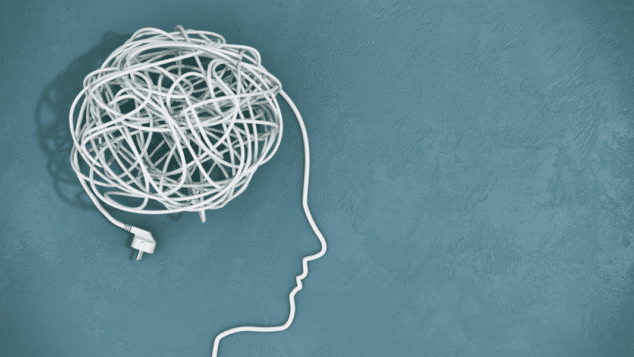The Cycle of a Successful Work-life Balance

With the onset of the COVID-19 pandemic, the government mandated businesses to adopt remote work environments. For the first time in the United States, it became the dominant way Americans conducted business. This transition was not the only abrupt change. Routines were disrupted, and everyday life as we knew it was upended. For many, the office entered the home, invading kitchens and living rooms, making it challenging to separate oneself from job responsibilities. Respondents in a 2020 survey by the World Economic Forum stated that the biggest challenges of working from home include difficulty unplugging after hours, collaborating, or communicating with colleagues, and a lack of motivation (Routley, 2020).
The stress of the pandemic combined with a new way of life for many highlighted the importance of self-care. A 2020 study by the Journal of the American Medical Association found that Google searches for “anxiety” and “panic” increased by 11 percent after a national emergency was declared. Another study reported an increase in self-care practices during the pandemic, stating that more than one-third of participants started a new or additional self-care practice during the pandemic. What does this mean for us today? Healthy living has gone beyond taking care of physical health and moved to a deeper focus on mental wellness. Work stress can cause both physical and mental health problems. From metabolic syndrome where people can be at a greater risk of diabetes, and heart disease to a greater risk of stroke (Meikle, 2015). A Harvard Medical School study found that people who worked 55 or more hours a week increased their risk of heart attack by 13 percent. They were also, “33 percent more likely to suffer a stroke, compared with those who worked 35-40 hours per week” (Ross, 2015).
A Harvard Medical School study found that people who worked 55 or more hours a week increased their risk of heart attack by 13 percent. They were also, “33 percent more likely to suffer a stroke, compared with those who worked 35-40 hours per week” (Ross, 2015).
What we’ve learned is that a positive work-life balance is not only paramount to our personal well-being but also crucial to our organization’s productivity and sustainability. The American Society for Gastrointestinal Endoscopy (ASGE) had options for remote working days before COVID-19, which was a welcome perk to many. However, they had to expand that model to remain competitive in employee retention and recruitment. “The new view of work-life balance has been reflected in being more strategic with our work calendar, as well as expanding remote options for select position roles,” said Ed Dellert, RN, MBA, CAE, FACEHP, who serves as chief of publications, learning, and operations officer for ASGE.
A myriad of studies during the pandemic focused on change management, wellness, and work-life balance, which brought to light an underlying issue that was obscured for years: employee burnout. If burnout continues, employee retention will suffer. The solution? A positive work-life balance.
Maureen Geoghegan, CAE, chief membership and communications officer at the American Society of Anesthesiologists (ASA), views work-life balance as essential for advocating and influencing organizational policies that support well-being. “As a leader, it’s also important to model what we want for our teams. Taking time off, sharing recharge strategies, and creating protected downtime are practices I prioritize and encourage,” says Geoghegan. “Advocating for and influencing organizational policies that support well-being wherever possible can help staff take time off without guilt or fear of falling behind, offering access to wellness and exercise benefits reinforces the importance of self, and creating volunteer opportunities builds community with colleagues.”
Work-life balance is about maintaining a harmony between your work and personal life. Studies have shown that overworked employees cost employers, from health problems to burnout, a condition of physical and emotional exhaustion, cynicism, detachment, ineffectiveness, and lack of feeling of accomplishment. Work-life balance is synonymous with self-care and prioritizing personal life in conjunction with professional life to feel fulfilled. Work-life balance may not always be equal, but nourishing the soul in both areas is a powerful way to rejuvenate yourself for optimal output.
Characteristics of a healthy work-life balance include:
- Setting boundaries and workday hours.
- Establishing goals and working to meet them.
- Maintaining an appropriate and attainable time management system.
- Being flexible and ready to pivot.
- Reflecting on what works and how to improve.
Stepping back and creating separation from work, whether in the office or working from home, can nourish the soul. Goal setting contributes to feeling fulfilled, and although some goals may be larger than others, even the smallest inch toward attaining your goal is akin to job satisfaction. Research has shown that checking items off a checklist releases small amounts of dopamine, which in turn provides fulfillment. Rome wasn’t built in a day, so remember to break down task lists into manageable and attainable increments. Plan and use time management strategies to set yourself up for success but remember to be flexible. No two days are going to be the same and unexpected challenges may arise. Whether the issue is personal or professional, be sure you have built in enough buffer to take care of unforeseen problems. Reflect on yourself and your relationships after all is done.
Maintaining a healthy work-life balance is as important as achieving it. So, why not take some time today to reflect on your work-life balance? Do you have some tips to share on how to maintain it? Let us know in this discussion thread on MyForum.
References:
Ayers, J. W., Leas, E. C., Johnson, D. C., Poliak, A., Althouse, B. M., Dredze, M., & Nobles, A. L. (2020). Internet Searches for Acute Anxiety During the Early Stages of the COVID-19 Pandemic. JAMA Internal Medicine. https://doi.org/10.1001/jamainternmed.2020.3305
Fiske, A., Schneider, A., McLennan, S., Karapetyan, S., & Buyx, A. (2021). Impact of COVID-19 on patient health and self-care practices: a mixed-methods survey with German patients. BMJ Open, 11(9), e051167. https://doi.org/10.1136/bmjopen-2021-051167
Meikle, K. (2015). Overworking Effects on Physical and Mental Health | Passport Health. Passporthealthusa.com. https://www.passporthealthusa.com/employer-solutions/blog/2019-2-overworking-affect-physical-and-mental-health/
Ross, J. (2015, December 14). Only the overworked die young – Harvard Health Blog. Harvard Health Blog. https://www.health.harvard.edu/blog/only-the-overworked-die-young-201512148815
Routley, N. (2020, June 3). 6 charts that show what employers and employees really think about remote working. World Economic Forum. https://www.weforum.org/agenda/2020/06/coronavirus-covid19-remote-working-office-employees-employers
Tags
Related Articles
Refill Your Cup: Summer Wellness Tips for Busy Professionals
Discover simple, effective ways to recharge this summer so you can show up as your...
Rewirement: A New Approach to Retirement
Retirement doesn’t have to mean stepping away—it can be a thrilling "rewirement" into a purpose-driven,...
Career Corner Roundup
Every single Career Corner article we published in 2024!




